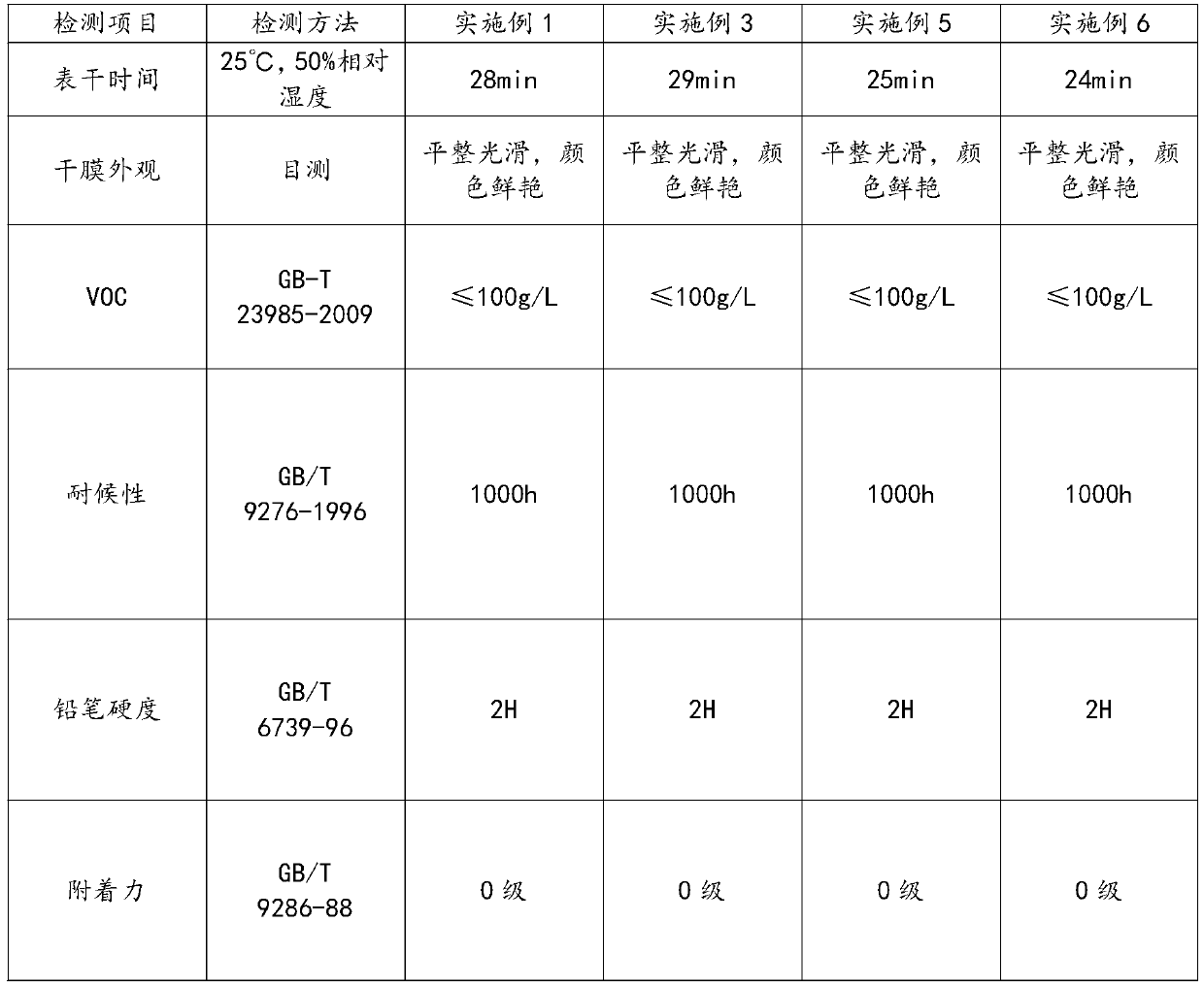Waterborne protective paint for container car and preparation method of waterborne protective paint
A protective paint and container technology, applied in coatings, epoxy resin coatings, etc., can solve the problems of high VOC content in paint, serious pollution and fire, poor water-based paint film, etc., achieve low VOC value, reduce sagging and sedimentation , good weather resistance
- Summary
- Abstract
- Description
- Claims
- Application Information
AI Technical Summary
Problems solved by technology
Method used
Image
Examples
Embodiment 1
[0047] A water-based protective paint for container vehicles, comprising the following raw materials in parts by weight: 10 parts of water-based epoxy ester resin, 65 parts of water-based acrylic emulsion, 6.5 parts of environmentally friendly solvent, 1.2 parts of neutralizer, 1.5 parts of dispersant, disinfectant 0.7 parts of foaming agent, 0.4 parts of substrate wetting agent, 0.48 parts of anti-settling agent, 0.5 parts of thickener, 1.5 parts of anti-flash rust agent, 0.5 parts of rheological agent, 1.2 parts of coupling agent, 0.2 parts of leveling agent, 6 parts of phthalocyanine blue, 2 parts of rutile titanium dioxide, 2.7 parts of talcum powder, 6 parts of aluminum tripolyphosphate, 8 parts of composite zinc phosphate, and 15 parts of deionized water.
[0048] The preparation method of described waterborne protective paint is to comprise the following steps:
[0049]A. According to the raw material ratio, stir the water-based epoxy ester resin evenly at a speed of 60...
Embodiment 2
[0052] A water-based protective paint for container vehicles, comprising the following raw materials in parts by weight: 18 parts of water-based epoxy ester resin, 50 parts of water-based acrylic emulsion, 7.5 parts of environmentally friendly solvent, 1.5 parts of neutralizing agent, 1.3 parts of dispersant, disinfectant 0.5 parts of foaming agent, 0.3 parts of substrate wetting agent, 0.4 parts of anti-settling agent, 0.8 parts of thickener, 1 part of anti-flash rust agent, 1.2 parts of rheological agent, 0.8 parts of coupling agent, 0.3 parts of leveling agent, 3 parts of phthalocyanine blue, 4 parts of rutile titanium dioxide, 2.5 parts of talcum powder, 8 parts of aluminum tripolyphosphate, 5 parts of composite zinc phosphate, and 20 parts of deionized water.
[0053] The preparation method of described waterborne protective paint is to comprise the following steps:
[0054] A. According to the raw material ratio, stir the water-based epoxy ester resin evenly at a speed o...
Embodiment 3
[0057] A water-based protective paint for container vehicles, comprising the following raw materials in parts by weight: 14 parts of water-based epoxy ester resin, 57 parts of water-based acrylic emulsion, 7 parts of environmental protection solvent, 1.3 parts of neutralizer, 1.4 parts of dispersant, disinfectant 0.6 parts of foaming agent, 0.35 parts of substrate wetting agent, 0.44 parts of anti-settling agent, 0.65 parts of thickener, 1.25 parts of anti-flash rust agent, 0.8 parts of rheological agent, 1 part of coupling agent, 0.25 parts of leveling agent, 4.5 parts of phthalocyanine blue, 3 parts of rutile titanium dioxide, 2.6 parts of talcum powder, 7 parts of aluminum tripolyphosphate, 6.5 parts of composite zinc phosphate, and 17.5 parts of deionized water.
[0058] The preparation method of described waterborne protective paint is to comprise the following steps:
[0059] A. According to the raw material ratio, stir the water-based epoxy ester resin evenly at a speed...
PUM
 Login to View More
Login to View More Abstract
Description
Claims
Application Information
 Login to View More
Login to View More - R&D
- Intellectual Property
- Life Sciences
- Materials
- Tech Scout
- Unparalleled Data Quality
- Higher Quality Content
- 60% Fewer Hallucinations
Browse by: Latest US Patents, China's latest patents, Technical Efficacy Thesaurus, Application Domain, Technology Topic, Popular Technical Reports.
© 2025 PatSnap. All rights reserved.Legal|Privacy policy|Modern Slavery Act Transparency Statement|Sitemap|About US| Contact US: help@patsnap.com

